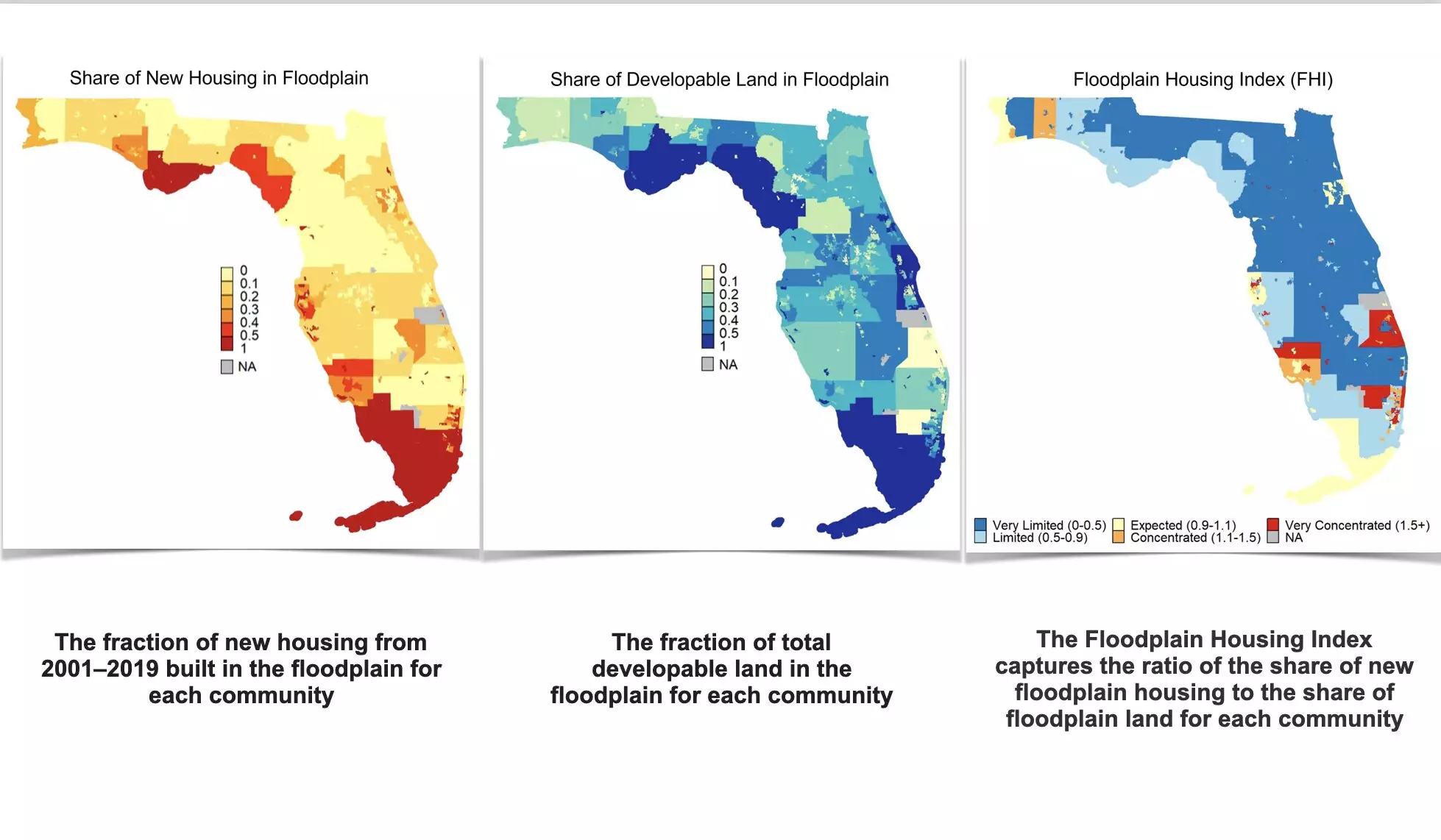In recent decades, the United States has witnessed significant changes in land use, particularly in floodplain areas. A comprehensive study led by researchers at the University of Miami’s Rosenstiel School of Marine, Atmospheric, and Earth Science has highlighted that over two million acres of floodplain have been developed over the last twenty years. Alarmingly, a staggering portion of this development—over 840,000 new residential properties—occurred in regions already susceptible to flooding, underscoring the complexities of urban expansion amidst environmental risks.
The data reveals a concerning trend, particularly concentrated in Florida, which accounted for approximately 398,000 of these developments. This figure represents roughly 21% of all new housing constructed in the state, establishing Florida as the leader in floodplain housing development across the nation. This concentration raises questions about the foresight of urban planning and the implications for communities that have prioritized growth over safety.
Utilizing a mix of geospatial land use data, impervious surface metrics, and housing statistics in conjunction with digitized regulatory floodplain maps, the researchers were able to analyze and quantify development patterns in flood-prone areas. The study reveals that, while the total number of new floodplain residences might seem considerable, it falls short of expectations based on the proportion of floodplain land available. According to lead author Armen Agopian, if new housing were developed in line with the available floodplain land, approximately 40% of new housing would be expected to occur within these vulnerable zones.
Interestingly, the findings indicate that the majority—about 74%—of communities across the U.S. have actively limited new construction in floodplains. This calls attention to the varying degrees of regulatory fervor among local governments and highlights the crucial role of governance in mitigating flood risks. The discrepancy between expected and real-world development also suggests that proactive steps are being taken to counteract the potentially damaging effects of construction in flood-prone areas.
The report further delineates differences between coastal and inland communities. Coastal areas show a higher propensity for new residential development in floodplains, a trend that could be driven by both high demand for waterfront properties and insufficient regulatory interventions. In contrast, inland communities seem more cautious, a possibly reflective stance towards the flooding risks that could increase as climate change progresses. These observations compel a discussion on not only regulatory frameworks but also cultural attitudes toward risk in different geographical contexts.
Another dimension of the findings addresses the influence of the Federal Emergency Management Agency’s (FEMA) Community Rating System. Participation in this program, designed to provide incentives for proactive floodplain management, correlates with increased development in flood-prone areas. While it is beneficial for communities to engage with the program, the study emphasizes that participation alone does not lead to safer practices; enhanced management of floodplain resources is essential to limit risky constructions.
Notably, the analysis highlighted a segment of communities that have made prudent preemptive decisions, successfully avoiding development in their floodplains. These “quiet champions” of flood management provide critical lessons in resilience. Their strategies are often absent from media coverage but play a vital role in safeguarding lives and property against the harsh realities of flooding. This highlights a paradox in disaster preparedness; often, the best practices exist away from the public eye, underscoring the need for recognition and replication.
As we navigate the challenges posed by increased flood risks and urban expansion, this extensive analysis serves as a critical resource. By understanding the current patterns of floodplain development and the varied responses of communities, stakeholders can foster more strategic planning and resilient infrastructures. Adopting a comprehensive approach to floodplain management is not merely beneficial but essential in a changing climate, particularly in flood-prone areas where development pressure is consistent and growing. Hence, the dialogue on floodplain development needs to persist, focusing not only on numbers but on sustainable practices that prioritize community safety and environmental integrity.

